MSI X79A-GD45 Plus Review: Building Up
by Ian Cutress on February 14, 2014 10:00 AM EST- Posted in
- Motherboards
- Intel
- MSI
- X79
MSI X79A-GD45 Plus BIOS
With Z87, MSI had upgraded the BIOS system on those motherboards and we rather liked the new design of fan controls in the BIOS. The X79A-GD45 Plus, as of BIOS V17.7, unfortunately did not have these new improvements, and is similar to that encountered with the Z77A-GD65 which we reviewed previously:
MSI's graphical BIOS was the result of an internal design competition - given various intricacies and factors in the final designs, the one that came 3rd went on to be the graphical interface we see today. Over the past few generations, I have been either critical of MSI with their P67 'BIOS games' (explained to me later as more of a technical showcase), or appreciative of their X79 revision. Do not get me wrong, the BIOS is well designed and easy to use - it is just that it could perhaps be easier, especially for overclocking.
The front page is good - we have CPU and system temperatures, CPU model, and speed, memory speed, memory size, BIOS version, and a boot order at the top. What is great about this is that the top bar (and side navigation tools) are persistent throughout the BIOS, never once disappearing. This layout is beneficial if we ever get an increase in BIOS resolution in the future so more information can be put into the center console.
The first set of menus are the ‘Settings’ options that offer the system status and Advanced features such as controller options, fan controls and boot settings. Most of it is straight forward, although MSI choose to have PCIe Gen 3.0 disabled by default in these menus, and the fan controls do leave a lot to be desired:
Users have a very limited range to work with, either due to the controllers themselves or the BIOS not opening up the options. The newer type of fan controls, as seen on Z87, should be in this BIOS. We also have fast boot options for Windows 8 users.
At this point I would like to interject with a suggestion: MSI need to put the path of which menu a user is currently in. From the screenshot above it is relatively difficult to ascertain the path taken, and it would be helpful if that path was listed somewhere on the screen. For example, the fan controls are in ‘Settings -> Advanced -> Hardware Monitor’.
A constant level on anguish on MSI BIOSes of late is the layout of the OC menu. Every overclock option seems to be jumbled into one menu, rather than separated out and organized into similar settings that might be relevant (e.g. a DRAM menu would have DRAM speed, XMP setting, voltages, load line calibrations and subtimings). Other manufacturers do this better, and I am surprised MSI has not picked up on this yet. As it stands, users have to move up and click the ‘Help’ option in order to get information as to what each setting does, rather than an onscreen display showing this automatically. Some of the issue here might be in MSI’s BIOS resolution, but I feel a lot could be the design being verbose with a lot of negative space.
The OC options are identical to other MSI layouts, with roughly CPU options at the top, then DRAM, voltages and a mêlée of CPU power options intermixed. There are sub-menus for DRAM timings, hybrid power settings and OC profiles. This links back in with the need for organization – either headers to separate the options or individual menus.
There is also additional scope here for automatic overclock options. The OC Genie overclock option is just a single set of values pre-programmed, and although the user can configure this on the fly, it might be helpful to give a range of pre-sets for a user to apply to the OC Genie button.
Elsewhere in the BIOS are power saving options, BIOS flashing utilities and security options.
MSI X79A-GD45 Plus Software
On the software side, the package for the X79A-GD45 almost mirrors that as seen on the Z87 side, and is almost identical to the Z87-GD65 Gaming we have reviewed previously, albeit without the Gaming software stack:
The stalwart of the package, Live Update 5, is still present in all its glory. So far in terms of auto-update packages, MSI’s was the first to reach an echelon worthy of an update package that informs the user and applies the updates. Other manufacturers are now getting into the groove, but MSI has that initial advantage.
In terms of the new, Command Center gets a fresh update. The new Command Center is a visual uplift from the old version, giving the user more control and a better experience in order to adjust the system – this includes a better visual of the fan controls as well.
However we start at the installation disk and not much has changed here. The interface has two main options at the top (Driver, Utility) which expand into several options below and a ‘Total Installer’ button. This button opens up a menu whereby the user can select/deselect options (such as Norton Antivirus) to install. I am beginning to get to a position where the Driver CD on loading should be showing information about the current setup as detected, such as CPU/motherboard numbers. This way we can verify the hardware we are dealing with without loading additional programs or opening up the case. Perhaps this is something easily implementable to think about for the future.
MSI Suite
The main aim for most motherboard manufacturers is to make a single interface that users can access all of the relevant manufacturer software. For ASUS this is AI Suite, for GIGABYTE this is EasyTune, ASRock has A-Tuning and MSI has MSI Suite. Designed to be somewhat out of the way, MSI Suite uses a small top-of-the-screen menu with icons.
These icons can be adjusted, and as shown above some like Live Update will actually notify the user if something needs their attention.
MSI Live Update 5
The big plus in the MSI package is from Live Update 5 (LU5). With LU5 the system will connect to the internet, detect the current platform, get a list of available software on the MSI servers, and then compare this to the software it can detect on the system. If there is a discrepancy in the version, it offers a download. Alongside the software available, the system also checks BIOS versions against the latest available on the servers. The only issue for me is that the program does not tell you the size of the download until you are actually downloading it, which could be an issue for limited bandwidth users if they end up downloading 200 MB of audio drivers rather than 5 MB of other software.
MSI Video Genie
The Video Genie software is a software tool designed by MSI to adjust the monitor settings on the fly for various on-screen visuals. Thus in a dark scene on a film it will attempt to provide more focus by making the screen contrast higher, or as shown below will attempt to adjust the screen for a more ‘lively’ feel. This type of feature is arguably a software replacement for some of the more hardware based solutions.
MSI Fast Boot
With motherboards now allowing for hardware enhancements to improve POST time to Windows 8, it can be difficult for users to get into the BIOS if the system bypasses the ‘Press F2 to enter BIOS’. For overclockers the solution is easy with ‘Go2BIOS’ buttons now being implemented on MSI motherboards. However if the system is in a case, there has to be a software solution, and MSI provide Fast Boot for this, with a Go2BIOS option.
Sound Blaster Cinema
As part of the drive to better audio solutions on motherboards, along with MSI’s Audio Boost, we have access to Sound Blaster Cinema software. This is a relatively simple interface designed to apply automatic EQ settings for 5.1 surround setups for films. Unfortunately it upset our audio testing a fair bit and had to be disabled for the benchmark.
MSI Click BIOS
In a continual effort to get users more used to the BIOS, MSI has for the last few generations included a utility that tries to mimic at least the look of the BIOS in case the user decides to go exploring.
The only criticisms are that most of the options are only officially changed when the system is reset, and due to the choice of font, everything seems rather spaced out in the options:
There is plenty of scope here to make software that works and works well. At this point in time, aesthetically, MSI Click BIOS still feels like it is a work in progress.
MSI Control Center
Another tool for users to adjust settings is Control Center.
Control Center pre-dates Command Center, but as MSI has configured both for X79, both are available. They both give the same options regarding overclocking and power, although Control Center is linked in with Click BIOS II via the top menu, and can turn the LEDs off on the motherboard if needed.
MSI Command Center
The last piece of the MSI software stack is our upgraded version of Command Center. Previous iterations were fairly complex with lots of information in a large interface (a bit like XTU) but visually did not disrupt the user experience. The new version of CC is of a similar ilk, however the settings are divided up to be easier to handle. For example, here is the first screen giving simple overclock and fan control options:
MSI has tried to split up the various sections of CPU/DRAM/GPU into menus, however users can navigate left and right – this puts CC in the firing line for an upgraded smartphone app in the future. With CC users can adjust fan controls, overclocks and voltages. Rather alarmingly Control Center allows users to apply 1.8 volts to their CPU immediately:
This is a large oversight. It would have been better for MSI to have an easy/advanced mode, where the advanced mode would allow voltages only extreme overclockers on sub-zero cooling would use.
A new element to CC is the addition of RAMDisk software, similar to ASRock’s XFast RAM:
If a user has a large pool of memory to use, any amount could be used to open up a RAM Disk and use it as a cache for some of the more readily used programs, such as web browsers, temp files or even page files.
Also available through CC is OC Genie, monitoring tools and an alert tool in case various values fall outside safe limits.


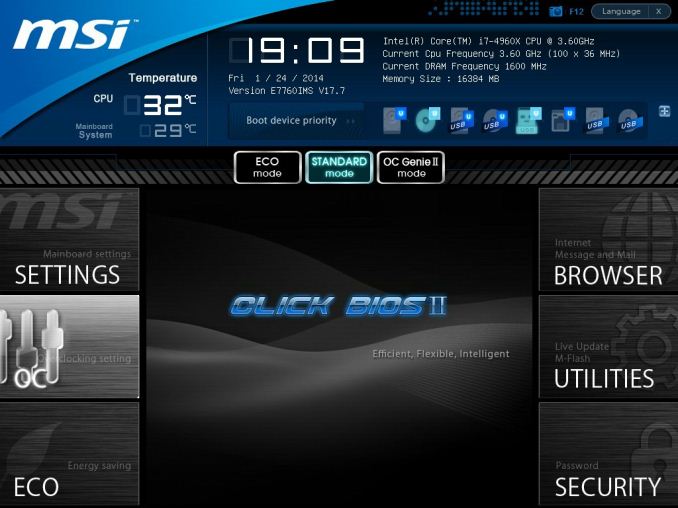
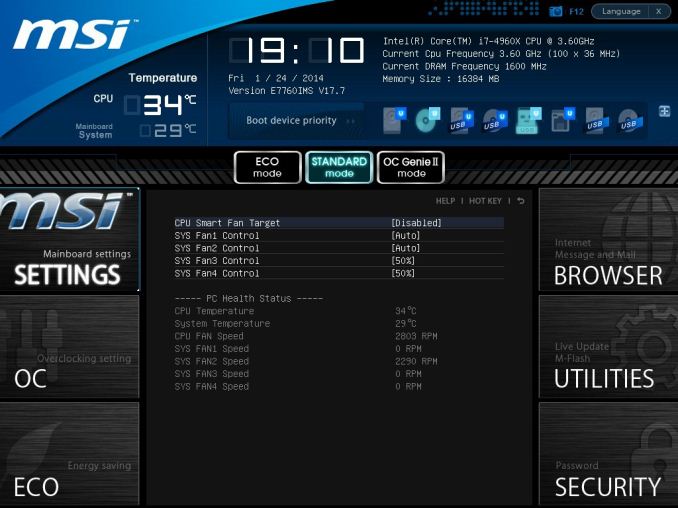

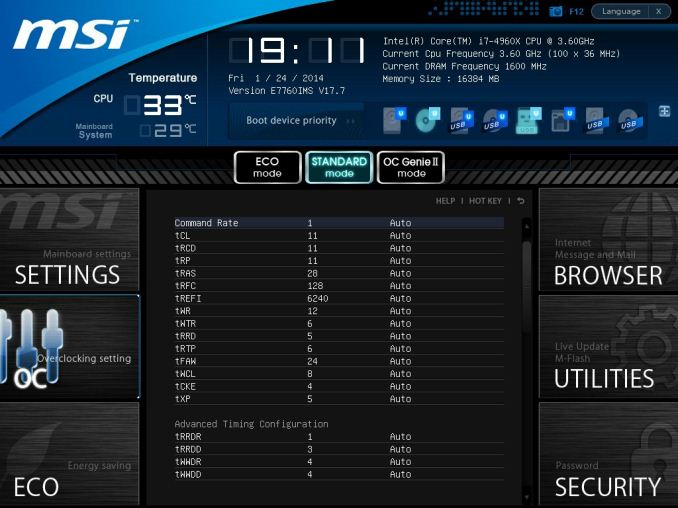
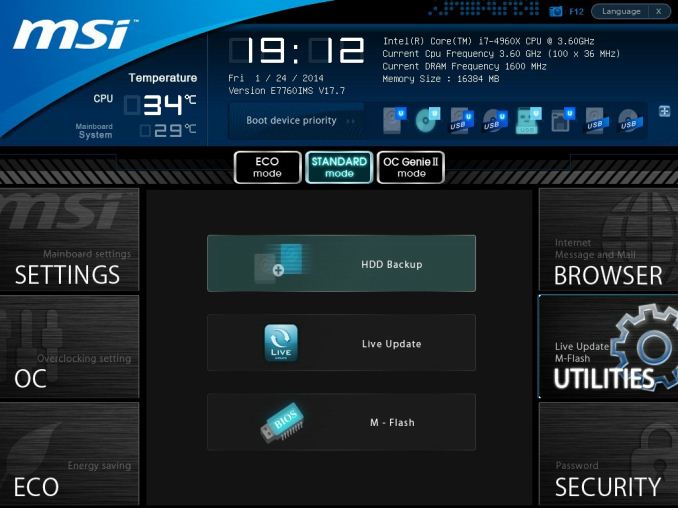






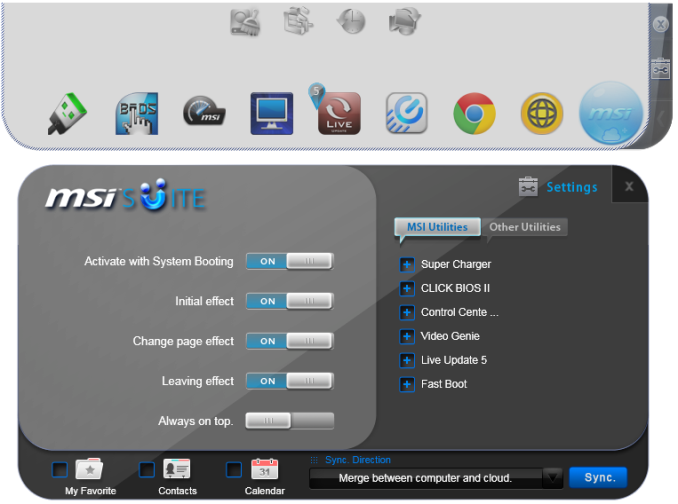
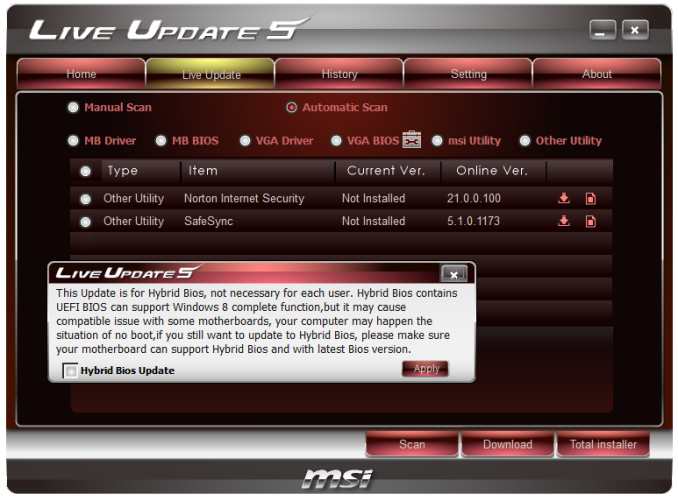
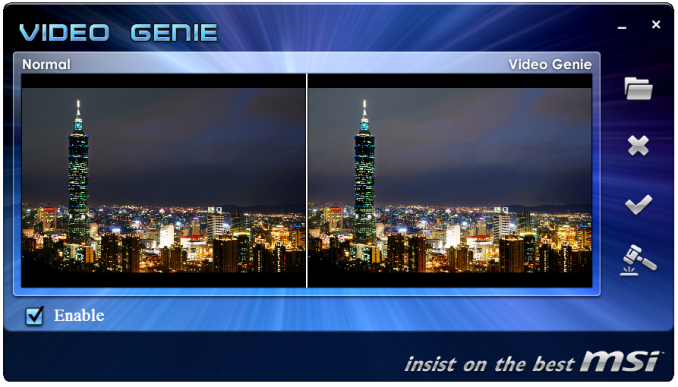
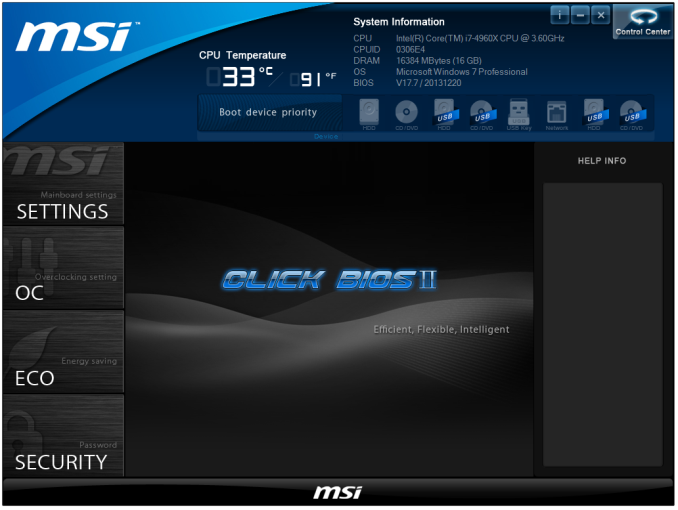
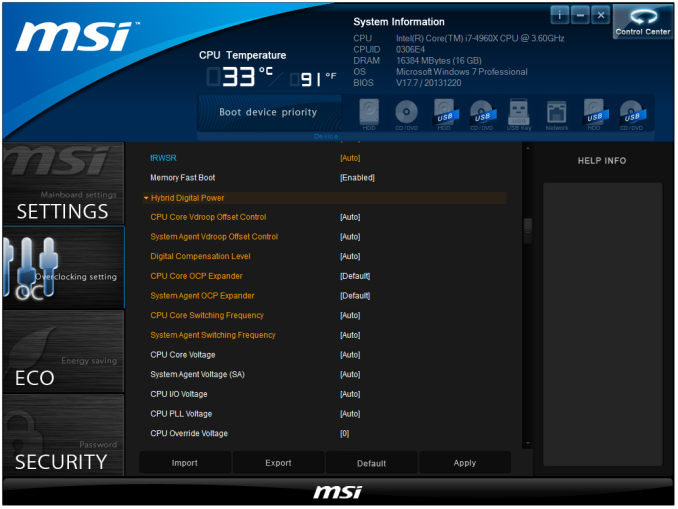

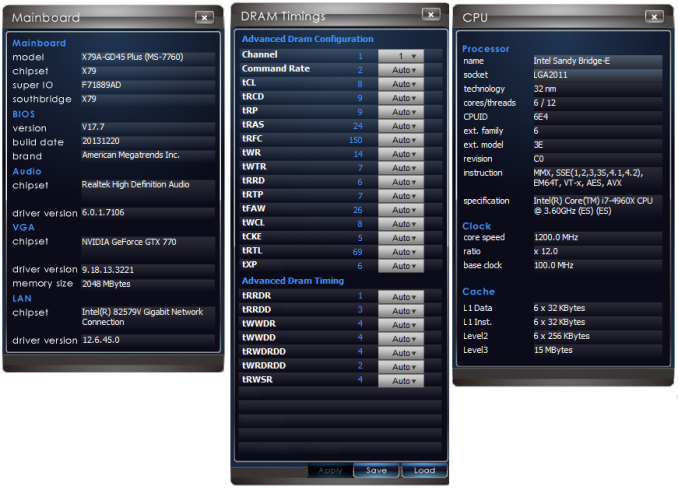

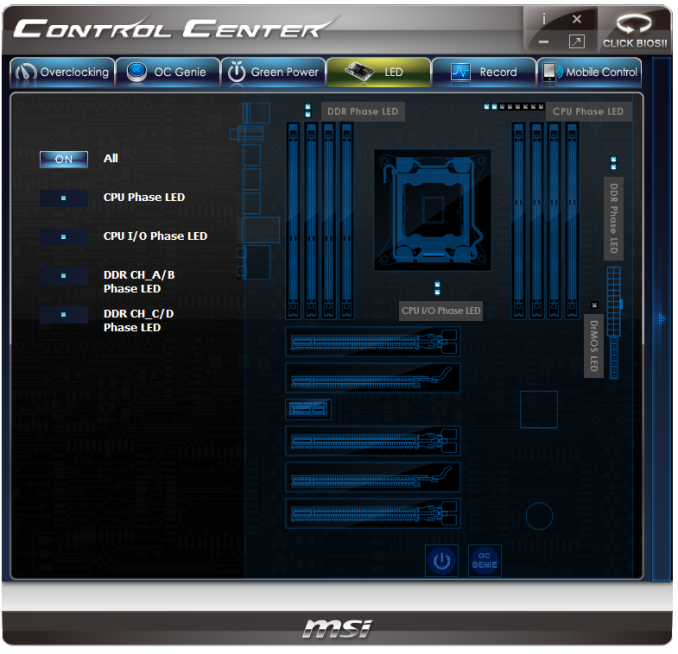
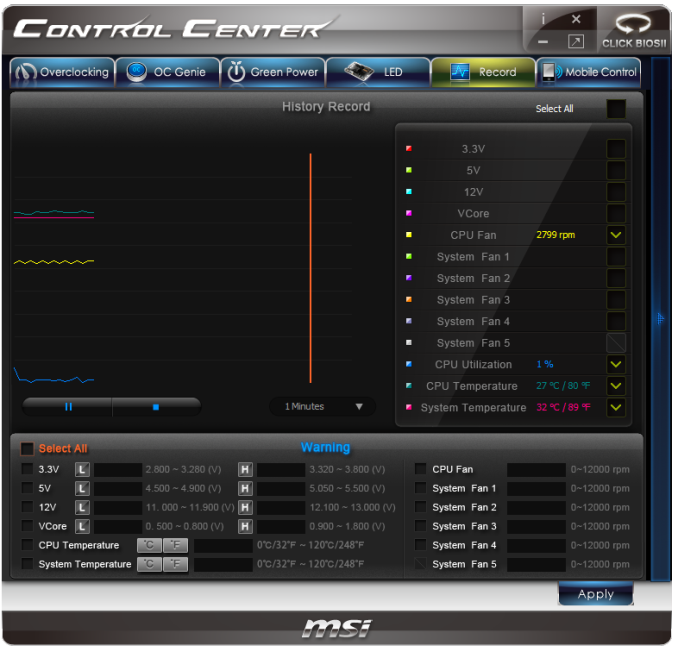
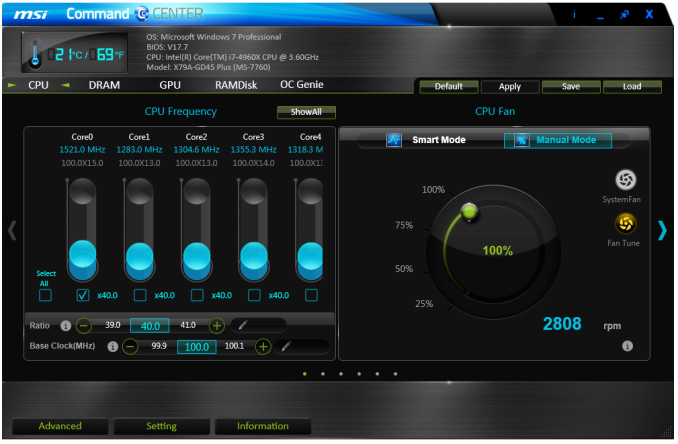

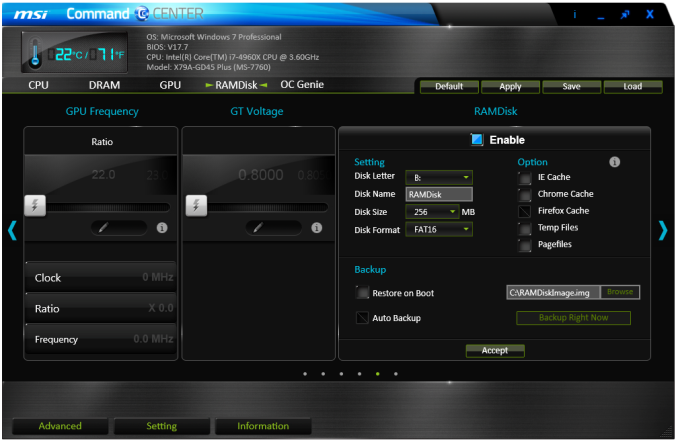
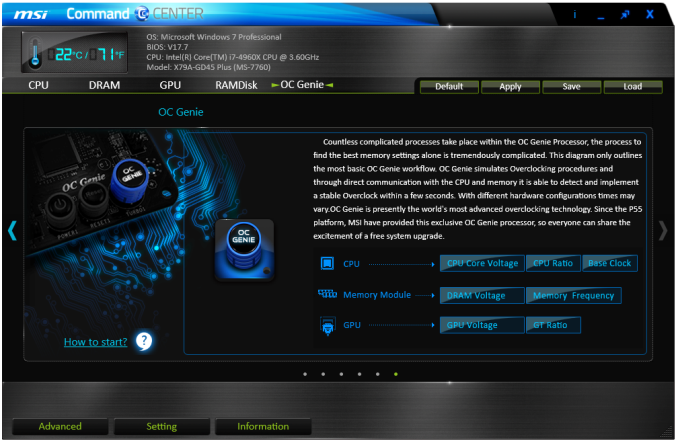
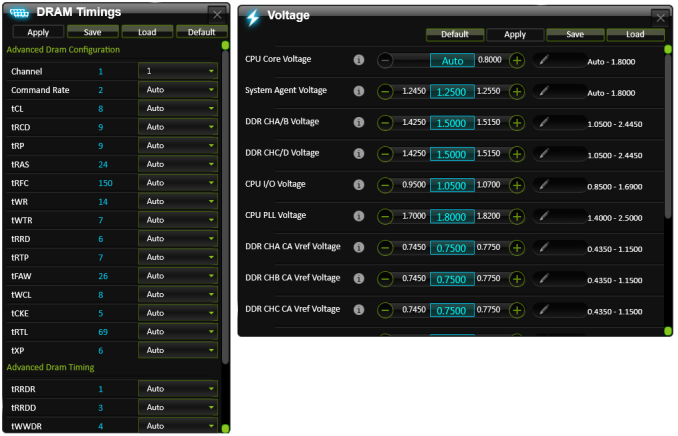














44 Comments
View All Comments
flemeister - Saturday, February 15, 2014 - link
Why? It still gets used occasionally, and it hardly takes up any room on the motherboard, unlike the old floppy and IDE headers.SirKnobsworth - Saturday, February 15, 2014 - link
Would I be correct in saying that only 3 of the secondary (2.0) PCIe lanes are being used? The PCH provides 8, but I only see one x1 slot, one NIC, and one USB 3 controller. At the very least they could have swapped the x1 slot for an x4 slot, allowing a high performance SSD to be installed.0xc000005 - Saturday, February 15, 2014 - link
This is a great board, bought one at work and it is excellent. The only letdown is that there are no drivers for windows server operating systems.Gigaplex - Sunday, February 16, 2014 - link
Considering it's using off the shelf chips that don't require special drivers, there should be no problem getting Windows Server working on it. Just don't expect them from MSIs website.Achaios - Sunday, February 16, 2014 - link
This "military class" thing is annoying.I wonder how well would this mobo fare under 5g stress, or say, after 5 days of a typical anti-guerilla mission mounted on an armoured vehicle moving through mountainous terrain/and/or cross country.
Or for instance, how well would it fare mounted on a PC onboard a Naval vessel after said vessel put its engines on "crash full astern" after making 30-35 knots on full ahead. Would this motherboard be able to withstand the excessive vibration produced by the engines of the said Naval Vessel? If not, what is the point of calling it "military class"?
AndrewJacksonZA - Monday, February 17, 2014 - link
Marketing. :-)AndrewJacksonZA - Monday, February 17, 2014 - link
I haven't played with Xeons for a while so I don't recall if Intel locks the Xeons in the factory, but assuming that this board can take it, what do you think the overclocking potential is for one of the oh-so-expensively-priced E5-2697 v2s are?mapesdhs - Tuesday, February 18, 2014 - link
XEONs are indeed locked, so the only oc'ing possible is via strapsand the limited potential of a base clock increase. In this respect,
it's easier to mess about with X58 XEONs (still locked, but oc'ing
was mostly via bclk anyway).
Ian.
mapesdhs - Monday, February 17, 2014 - link
Ian, re the SATA3 ports that are part of Intel's X79 chipset, do you know if
Intel makes a SATA3 RAID or JBOD card which uses the same circuitry
which drives their X79 SATA3 ports? Or does any other company make such
a thing based on Intel's SATA3 technology? On X79 boards which only have
a Marvell chip (terrible controller) for additional SATA3, it would be great to
be able to add a PCIe card that provided the same functionality as a full set
of proper Intel SATA3 ports. I have an ASUS P9X79 WS, specced up the wazoo:
http://valid.canardpc.com/zk69q8
but the only thing which really lets it down is the limited number of Intel SATA3
ports (ie. 2).
Ian.
Morcrist - Tuesday, February 18, 2014 - link
Is it just me, or does the author completely miss the fact that this board supports 128 GB of ram?I mean, it kinda' threw me off at first when on the first page he alternately refers to the board as a GD45 and a GD65. I thought maybe the 'GD65' only supported the 64 GB.
But no, every image in the article has GD45 on it so...
WTF?